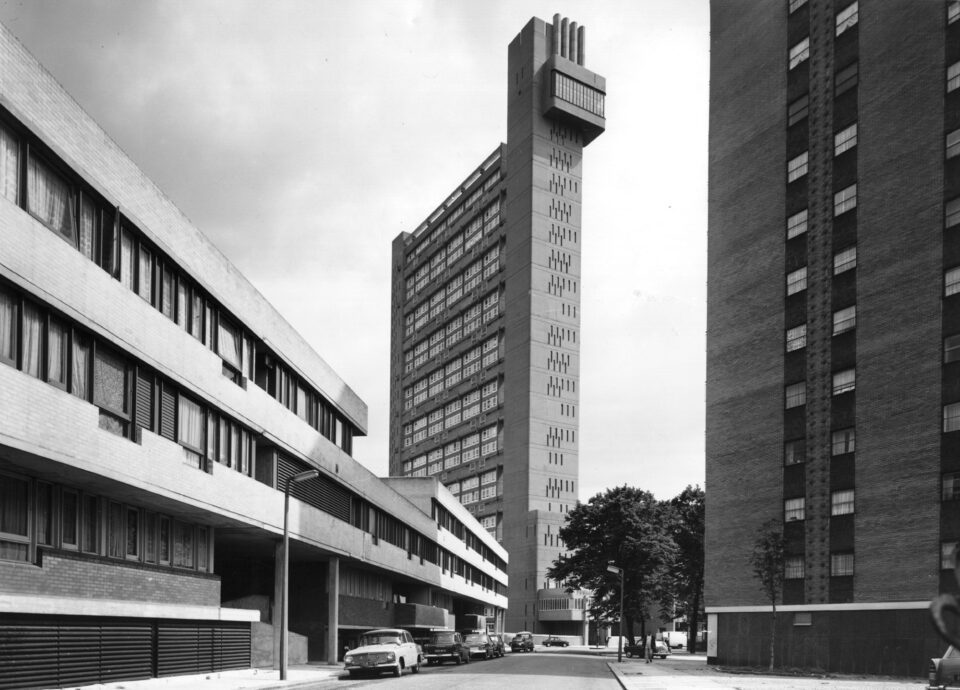It’s near impossible to predict what the landscape of the UK would look like without the Hungarian architect and designer Ernő Goldfinger (b. 1902), whose influence is integral to British design. Born in Budapest and later studying in Paris, Goldfinger made London his home in 1939, where he became a cornerstone of Modernism. Goldfinger is commemorated in a forthcoming publication from Historic England with Ernő Goldfinger. Written by Elain Harwood and Alan Powers, architectural historians and experts in Brutalism, the book is illustrated by new photography and plans from the designers own extensive archive.
Goldfinger treated concrete delicately, a material that could be refined. This, perhaps inadvertently, gave many British cities their identities. After WW2, when ~1.7 million homes across London were damaged, Goldfinger was enlisted to find a cure for the city’s ever-worsening social housing problems. With that came Balfron Tower (1963) and Trellick Tower (1972), two skyline dominating residential blocks which characterised mid-century brutalist architecture. Both are Grade-II listed buildings, yet they were not fully appreciated at the time of their construction. Once Trellick Tower was completed brutalism had fallen out of stylistic favour, making it a magnet for high crime rates. Today, however, his creations have made him into an almost cult-like figure in pop-culture – Trellick Tower is believed to form the inspiration behind J.G. Ballard’s High Rise, and features in the Martin Amis novel London Fields.
Elain Harwood and Alan Powers’ Ernő Goldfinger is available in September from Historic England. Find out more here.
Lead Credit: Trellick Tower, Peter Trulock.





